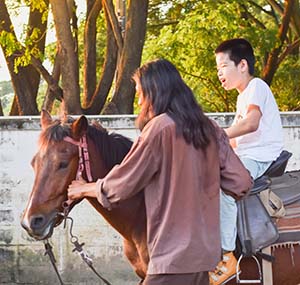- Candidates
- Login
- Set Up Account
- Create a Job Alert
- Search Tools
- Resources
- Employers
Overview
A therapeutic riding instructor teaches horseback riding lessons to adults and children with emotional, physical, or cognitive (the ability to think, learn or remember) disabilities. The goal of therapeutic riding (also called hippotherapy) is to increase independence, mobility (movement), balance and improve the mental and emotional health of those with special needs. Therapeutic riding instructors are also responsible for monitoring the health and behavior of the horses under their care.

What responsibilities will I have?
What education and training is required?
An associate or bachelor’s degree in animal science, equine science, agriscience or a related field is recommended. To become a certified therapeutic riding instructor (CTRI) you must go through the Professional Association of Therapeutic Horsemanship International (PATH Intl.) application process. The process includes becoming certified in adult and child CPR and first aid, having evidence of at least 30 hours of handling and management equine experience and have documentation of experience working with individuals with disabilities or special needs under the supervision of a certified PATH Instructor. Applicants must also include a 10–20-minute video displaying their ability to instruct a rider through a specified riding pattern and pass the PATH Intl. Standards Exam.
To pursue a career as a Therapeutic Riding Instructor:
The following high school courses are recommended: agricultural education, animal science, equine science, biology, anatomy and physiology.
Where can I work?
Employers may include therapeutic riding centers, ministry associations and nonprofit groups. There is also the opportunity for self-employment.
Future Job Market / Outlook
Fair
Suggested Professional Organizations and Associations